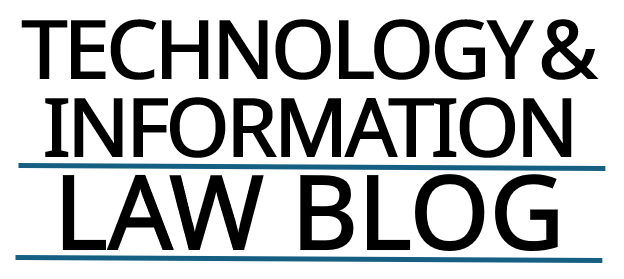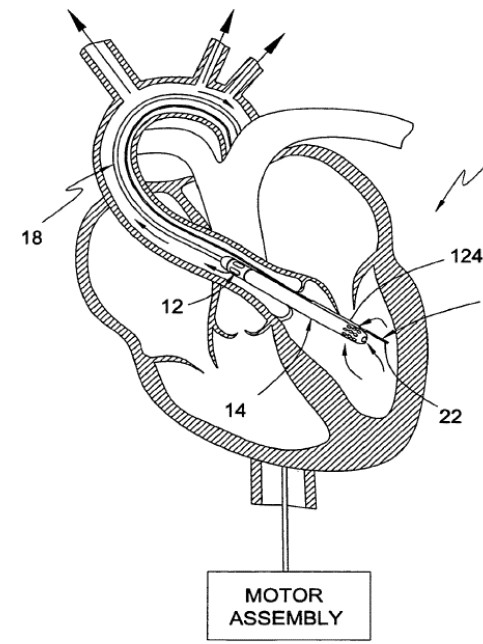On March 21, 2025, the Federal Circuit vacated a district court judgment of non-infringement and remanded the case for further proceedings in Maquet Cardiovascular LLC v. Abiomed Inc. (No. 23-2045). The opinion focuses on the claim construction of U.S. Patent No. 10,238,783 (the “’783 patent”), specifically the proper application of the prosecution disclaimer doctrine and the relevance of related patents’ histories in claim construction.
Background and Claims at Issue
Maquet’s ’783 patent relates to intravascular blood pump systems that include integrated guide mechanisms for positioning the pump inside the circulatory system. At issue were three claim terms from claims 1 and 24:
- “Guide mechanism comprising a lumen” (claim 1)
- “Guide mechanism is configured to allow for a guide wire to slideably advance therealong” (claim 1)
- “Guide wire does not pass through the rotor hub or the catheter” (claim 24)
The district court construed each of these to include negative limitations—e.g., that the lumen is not distal to the cannula or that the guide wire does not pass through the free space between rotor blades—based on prosecution history from related patents. Maquet stipulated to non-infringement under these constructions and appealed.
Federal Circuit Analysis
1. Prosecution Disclaimer Must Involve Similar Claim Language
The Federal Circuit vacated the district court’s construction of the term “guide mechanism comprising a lumen”, holding that the court erred in relying on amendments to different claim language in a parent patent (U.S. Patent No. 9,789,238). The court reiterated that prosecution disclaimer generally does not apply when the claim term at issue in the descendant patent uses different language from that in the ancestor patent.
The court cited:
- Advanced Cardiovascular Sys., Inc. v. Medtronic, Inc., 265 F.3d 1294 (Fed. Cir. 2001): emphasizing that the prosecution history of a related patent is only relevant when it addresses a limitation in common.
- Regents of Univ. of Minn. v. AGA Med. Corp., 717 F.3d 929 (Fed. Cir. 2013): reaffirming that prosecution disclaimer does not apply when there is no parity between claim limitations.
- Ventana Med. Sys., Inc. v. Biogenex Lab’ys, Inc., 473 F.3d 1173 (Fed. Cir. 2006): noting that different claim language generally precludes the application of disclaimer.
2. Silence in Response to Examiner Statements Is Not a Disavowal
On the issue of whether the guide wire could pass through the space between rotor blades, the court reversed the district court’s reliance on statements in the prosecution of U.S. Patent No. 8,888,728 (a great-great-grandparent of the ’783 patent). The district court had found a disclaimer based on the applicant’s failure to contest an examiner’s notice of allowance distinguishing prior art.
The Federal Circuit rejected that approach, citing:
- Salazar v. Procter & Gamble Co., 414 F.3d 1342 (Fed. Cir. 2005): holding that an applicant’s silence in response to an examiner’s characterization does not constitute a clear and unmistakable disavowal.
- Avid Tech., Inc. v. Harmonic, Inc., 812 F.3d 1040 (Fed. Cir. 2016): emphasizing the high standard required to find prosecution disclaimer based solely on prosecution history—namely, a “clear and unmistakable” disavowal.
- Phillips v. AWH Corp., 415 F.3d 1303 (Fed. Cir. 2005) (en banc): confirming that claim terms are to be given their ordinary meaning in light of the intrinsic record, absent a clear disclaimer.
The court also held that general statements Maquet made during an inter partes review proceeding were too vague to constitute a disclaimer under Aylus Networks, Inc. v. Apple Inc., 856 F.3d 1353 (Fed. Cir. 2017).
3. Specification Did Not Require Limitation on Guide Wire Path
Finally, the court rejected Abiomed’s argument that the patent specification limited the guide wire’s path. The court found no “manifest exclusion or restriction” in the specification that would justify reading in a limitation that the guide wire cannot pass through the rotor blade area, citing:
- Liebel-Flarsheim Co. v. Medrad, Inc., 358 F.3d 898 (Fed. Cir. 2004): noting that limiting a claim based on the specification is only appropriate when the patentee clearly expresses such a limitation.
Conclusion
The Federal Circuit vacated the judgment of non-infringement as to the ’783 patent and remanded the case for further proceedings under corrected claim constructions. The court left undisturbed the separate judgment of non-infringement as to U.S. Patent No. 9,789,238, which Maquet did not challenge on appeal.
The opinion provides guidance on the limits of prosecution disclaimer and underscores the need for clear, consistent claim language across related patents when relying on prosecution history to construe claims.
Post by Charles Gideon Korrell


Leave a Reply